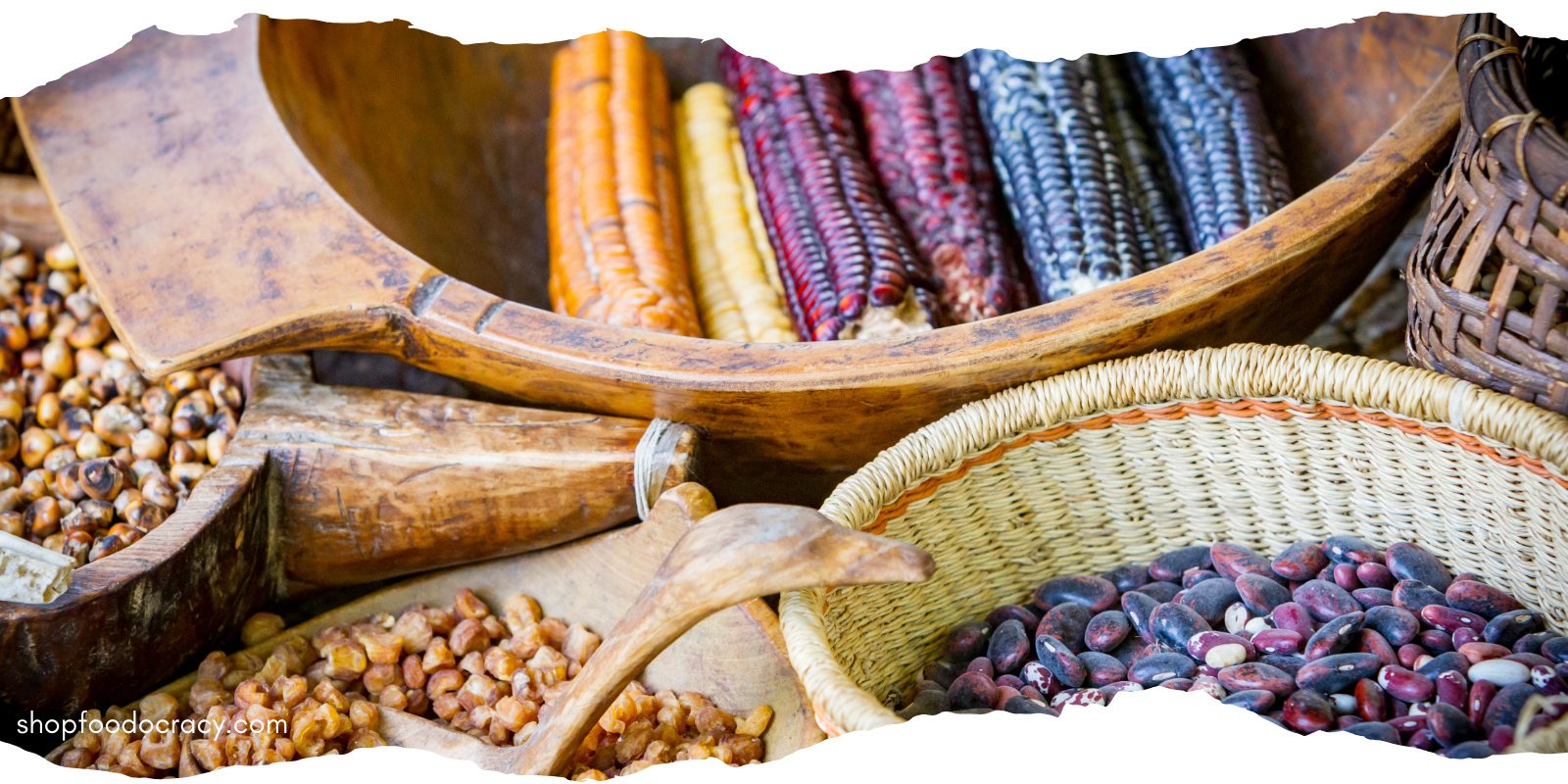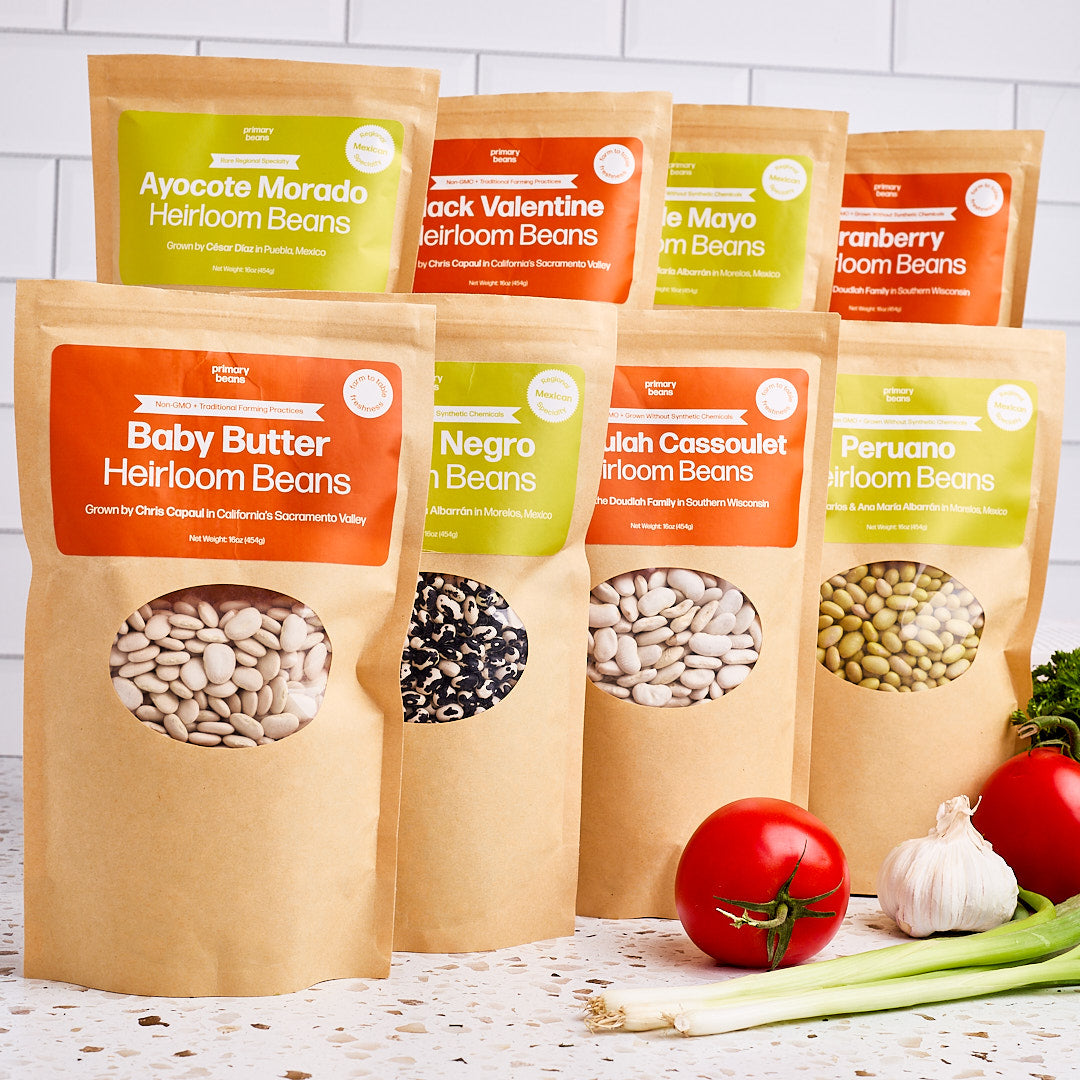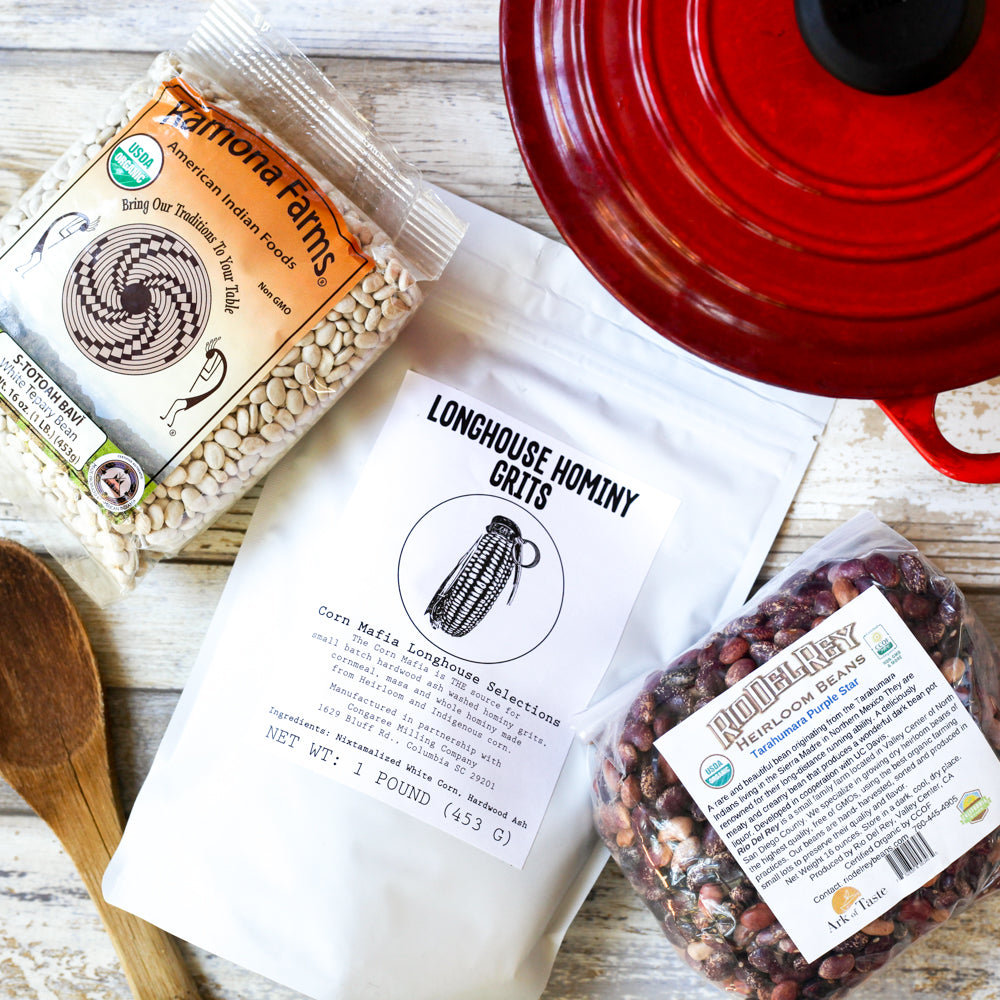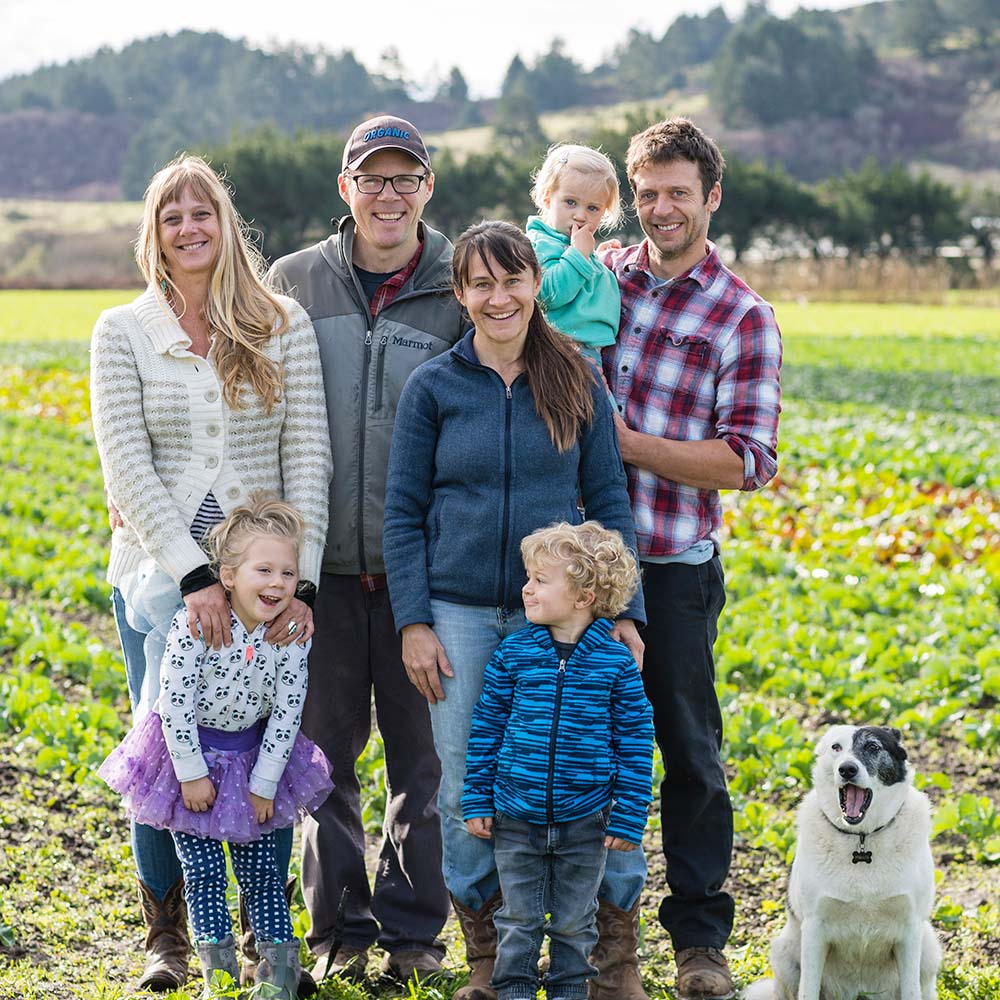10.99 FLAT RATE SHIPPING
10.99 FLAT RATE SHIPPING
SHOP

Embracing the Three Sisters Legend
June 13, 2022 7 min read
Meet the sustainer of Indigenous cultures for centuries and one of the original examples of regenerative farming, The Three Sisters. Corn, beans, and squash planted or eaten together create an ideal environment for success, and hold a strong spiritual and cultural connection to the history of Indigenous people.

Photo by Dulcey Lima
WHAT ARE THE THREE SISTERS?
The Three Sisters are well known staples to Native Americans across North America. It is the Holy Trinity of our Indigenous cultures and the legends that accompany it are intertwined in the creation stories of many tribes.

Photo by Markus Spiske
The Three Sisters, corn, beans, and squash, are grown together to create a perfect ecosystem that helps all 3 plants thrive. The corn is a tall stalk, which creates a ladder for beans to grow up. The beans climb up the stalks to reach sunlight. As a result of growing beans, nitrogen is provided through the soil to fertilize the corn and squash. The squash is planted around the beans to provide shade around the roots and protection with prickly leaves that keep animals away. The ecosystem created by the Three Sisters forms ideal conditions for companion planting. Although it is uncertain exactly when three sisters' planting was created, Native Americans must be recognized as the original regenerative farmers. Before European colonization in the 1600s, Indigenous groups were known to use this method at least 300 years prior. In efforts to decolonize the Three Sisters, it is important to remember the past, recognize the present, and be proactive for the future. Native Americans healed the ground, and their stomachs, with the creation of three sisters planting, and credit is long overdue.
HOW TO PLANT A THREE SISTERS GARDEN
Three sisters planting works best in warm seasons and would not fare well in the colder months. The corn should be planted first, to make sure it grows tall enough for the beanstalks. About two to three weeks after planting the corn, it is time for the beans. After the beans emerge, it is time to plant the squash. As they say in Native Seed/SEARCH there are many configurations and varieties with planting a Three Sisters garden.
COOKING WITH THE THREE SISTERS
 Not only do the three sisters work together in agriculture, they also create balanced nutrition when eaten together. When combined, the amino acids from these 3 plants creates complete proteins, eliminating the need for meat. Sean Sherman, decolonizes traditional Native American foodways by using no European staples like wheat flour, dairy, sugar, domestic pork and beef in his creations in his 3 Sisters Bowl. Make a 3 sisters salad with this delicious recipe by Kiowa Foodie. Purchasing beans and corn from Native American Owned companies like Ramona Farms and Corn Mafia are great ways to explore indigenous traditions and cultures while supporting them. You can find many Native Owned ingredients at Foodocracy but we encourage you to also explore products being sold directly by Native American Owned stores.
Not only do the three sisters work together in agriculture, they also create balanced nutrition when eaten together. When combined, the amino acids from these 3 plants creates complete proteins, eliminating the need for meat. Sean Sherman, decolonizes traditional Native American foodways by using no European staples like wheat flour, dairy, sugar, domestic pork and beef in his creations in his 3 Sisters Bowl. Make a 3 sisters salad with this delicious recipe by Kiowa Foodie. Purchasing beans and corn from Native American Owned companies like Ramona Farms and Corn Mafia are great ways to explore indigenous traditions and cultures while supporting them. You can find many Native Owned ingredients at Foodocracy but we encourage you to also explore products being sold directly by Native American Owned stores.
THE HAUDENSAUNEE LEGEND
It was the Iroquois, The Haudenosaunee, that coined the term “The Three Sisters.” The Haudenosaunee Confederacy, also known as the Iroquois Nation, is made up of five tribes, the Mohawks, Oneidas, Onondagas, Cayuwegas, and Senecas. They occupy territories around Lakes Ontario, Huran, and Erie as well as what is now known as New York, Pennsylvania, southern Ontario and Quebec.
One Haudenosaunee legend of the Three Sisters recounts corn, beans, and squash emerging from the body of the Sky Woman’s daughter. The story begins with the creation of the earth. Sky Woman fell from the upper world while peeking down into an endless sea. As she descended, the animals placed soil from the bottom of the sea onto the back of a giant sea turtle. Sky Woman’s fall created Turtle Island, what we now call North America.
With the creation of Turtle Island, Sky Woman gave birth to a daughter. Her daughter grew up and became pregnant, but died during childbirth. She was buried on Turtle Island by Sky Woman, and corn, beans, and squash grew from the grave. These plants provided for her family, and soon after, they were the physical and spiritual sustainers of life.
To the Haudenosaunee people, women are honored leaders. Not only were they in charge of the aspects of farming; planting, cultivating, harvesting, and processing, but the leaders of the clan, Clan mothers, have power over all of the men's decisions. It was an honor and a privilege for women of the tribe to grow the Three Sisters because it was gifted by a woman.

THE CHEROKEE NATION
Photo by Dulcey Lima
In a Cherokee Nation legend, there were three sisters, Corn Girl, Bean Girl, and Squash Girl. The three girls' personalities and looks were nothing alike. Corn Girl was lengthy, blonde and wore a pale, green dress. Bean Girl was small, fast, but not very strong. She was an excellent cook but could not stand up on her own. The third sister, Squash Girl, also wore a yellow dress, and she was shorter and plumper than her sisters.
The three sisters did not get along, like most do. They minded their own business and did not interact. But the days lingered. Corn Girl's feet ached and burned from standing in the sun all day. The weeds ambushed her rampantly. Bean girl lived a cold life on the ground. Since she could not stand and the ground made her dirty and wet with no protection. Finally, Squash Girls could not feed herself and her hunger continued to soar.
The sisters’ continued to struggle until Bean Girl suggested an idea that Corn Girl loved. Bean Girl would feed her sister if she could hold her to stay clean. Squash Girl asked Corn Girl if she could lie on her feet to protect them from the hot sun. Sure enough, Corn Girl loved that idea too. The Three Sisters soon realized that they would succeed if they worked together, and surrendered independence for companionship. Our friends at Cherokee Copper created this beautiful Three Sisters Necklace to honor their ancestral bond to this iconic legend. Visit them at CherokeeCopper.com
 The Cherokee Nation was the first Native American Nation to contribute their cultural collection to the Svalbard Global Seed Vault, including the Cherokee Trail of Tears. The Svalbard Global Seed Vault houses over a million varieties of seeds to protect crop diversity.
The Cherokee Nation was the first Native American Nation to contribute their cultural collection to the Svalbard Global Seed Vault, including the Cherokee Trail of Tears. The Svalbard Global Seed Vault houses over a million varieties of seeds to protect crop diversity.
The Trail of Tears bean endowed that name after the horrific Trail of Tears from October 1838 to about April 1839. The Cherokee people were forced to walk from the Smokey Mountains to Oklahoma during winter without sufficient aid or food. About 4000 of the Cherokee people died tragically during forced relocation after Andrew Johnson’s Indian Removal Act.
To the Cherokee Nation, beans are a prized possession. They were brought with anywhere they could fit and now the Trail of Tears bean memorializes the forced death march forced upon the Cherokees. The beans were carried as a symbol of hope, a token of home, and a source of life.
THE ABENAKI EXPAND ON THE SISTERS
The Three Sisters became the Seven Sisters in the tradition of the Abenaki Tribe. The Abenaki people lived in what is now most of Vermont, New Hampshire, Quebec, and Maine. The Seven Sisters consists of the Holy Trinity, beans, corn, and squash, plus sunflower, Jerusalem artichokes, ground cherries, and tobacco.

Photo by Alexander Schimmeck
The Seven Sisters were named after Pleiades, a seven sister star cluster, that signified to the Abenaki when to plant or harvest the crops. The crops could be eaten fresh or dried, which would last them through the winter time until the next season. As time went on, the Abenaki continued their tradition of planting signified each year by the stars.
Two important stories to Abenaki Heritage are the creation of Corn Mother and The Three Sisters, a moral taught in an Elnu Abenaki version of the Three Sisters, told by Chief Roger Longtoe Sheehan.
Chief Roger Longtoe explained how that Abenaki descended from the Ash Tree and the Tabulmak, or the creator, used two fine ash trees to carve the First Man and First Woman. The First Woman was known as the Corn Mother with her platinum blonde hair and long stature.
Corn Mother and First Man created a home near the Connecticut River. As time went on, food was scarce in the freezing winters. To save their people from starvation, First Man had to sacrifice Corn Mother. Corn Mother reassured First Man that she would come back to him and the grass would grow long and tall with beautiful hair like her. First Man buried his wife and not long after, beautiful corn expanded across the field.

Photo by Erik Aquino
The Three Sisters originates from the sisters of the Corn Mother. They visited her grave each year to take care of it and each sister was consequently buried with her. When the first sister died, as she grew she hugged and climbed her older sister as beans. The third sister was the last to be buried and created as a defense barrier with prickly leaves. The Three Sisters protected and helped each other grow to sustain generations of their people.
Calypso beans are believed to be one of the bans used by Abenaki Tribes. Planting begins when the Pleiades rises with the sun in the spring and Harvesting begins when the Pleiades appear in the early night in winter. With their distinctive yin-yang pattern, these beautiful beans are packed with protein and fuel the soil with nitrogen to naturally fertilize the other sisters.
LEARN MORE
Supporting Indigenous cultures can be as simple as unlearning the story of Christopher Columbus or streaming a native artist's music.
Foodocracy has a variety of Native owned businesses and products in the store and heirloom bean and grain club. Enjoy your own Three Sisters meal with hand-picked, exclusive products. Each month, Foodocracy’s Heirloom Beans and Grains Club delivers rare ingredients straight to your door and recipes or suggestions are sent straight to your inbox.
Recent Articles
About Us
Foodocracy is dedicated to creating a more sustainable and independent food system. We support small, independent farms across the nation.
Get impossible to find beans and grains shipped direct to your doorstep each month from small family farms.
We support small, family owned farms across the nation. Did you know that farmers only make an average of 10 cents on every dollar you spend at the supermarket? Working directly with farms and not middle men ensures that more money goes back to the people actually growning your food.
Get 10% Off
Sign up for delicious recipes and special offers.
**Regularly priced items only.




